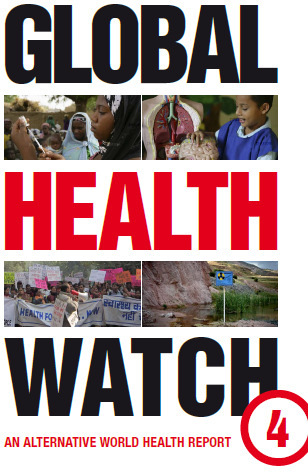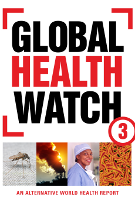13.06 Draft WHO HIV/AIDS strategy 2011–2015
Following the request to the Director-General in resolution WHA63.19 (page 37) to submit a WHO HIV/AIDS strategy for 2011–2015, a broad consultation process has informed a draft global health sector strategy for HIV/AIDS structured around four main goals: improving HIV outcomes; improving broader health outcomes; strengthening health systems; and creating supportive environments.
The Assembly will consider the draft strategy (contained in WHA64/15.
The draft strategy was developed through a consultative process (including a 7-week online consultation between July and September 2010). It was developed in parallel with UNAIDS 2011-2015 strategy, with the aim of guiding national health sector responses.
The draft strategy supports and reinforces the agreed division of labour among UNAIDS cosponsors. Among the UNAIDS cosponsors WHO is responsible for the health-sector response to HIV, taking the lead on HIV treatment and care and on HIV/tuberculosis co-infection, shares responsibility with UNICEF for the prevention of mother-to-child transmission of HIV, and collaborates with other cosponsors in supporting actions in all other priority areas.
AIDS/HIV is also considered as one of the progress report items at 13.17J. This item concerns the Implementation by WHO of the recommendations of the Global Task Team on Improving AIDS Coordination among Multilateral Institutions and International Donors (resolution WHA59.12). The progress report is presented at Doc A64/26.
WHO Watch Comment on Draft WHO HIV/AIDS strategy 2011–2015 (A64/15) and Progress Report (A64/26, page 18) on the Implementation by WHO of the recommendations of the Global Task Team on improving AIDS coordination among multilateral institutions and international donors
The Draft HIV/AIDS strategy should inform AIDS coordination and vice versa, with clear links established between the two. The two items should not be considered in isolation from one another.
The health financing element of the draft strategy calls for the adoption of approaches to minimise out-of-pocket expenditure, but places mobilisation of donations for adequate funds as the principal element, further reinforcing a vertical donor-centred approach, which is unsustainable. The immediate interpretation of such approach is that it seeks to avoid negotiating the cost of diagnostics and treatment and not challenging the commercial interests of the pharmaceutical industry. We believe that mainstreaming a policy that prioritises cost reduction and funds mobilisation, is more sustainable. In many settings shifting to generic products would significantly reduce costs.
The vertical approach, which is criticised for being unsustainable, should be addressed through strengthening national capacity, in particular health regulatory and legislative capacities. Investing in local pharmaceutical manufacturing capacity, where available, is also a long term solution which should be considered.
On containing costs, the Strategy highlights the need for an “open, competitive market”, referring to the use of the TRIPS flexibilities “as needed”, and suggesting the options of “patent pooling and voluntary licence agreements between patent holders and generic manufacturers”. This paragraph is very conservative in terms of genuine cost containment. We believe the use of the flexibilities contained in the TRIPS Agreement, and further emphasised by the Doha Declaration, is a legitimate and certain way of ensuring access to affordable medicines. For example, compulsory licensing and government use options in particular have been of tremendous benefit to several developing countries in terms of providing affordable ARVs. Hence, the use of flexibilities should be encouraged. While voluntary licensing and patent pools are useful short term solutions, it is also important to be investing in long term options which help develop local research and development, and manufacturing capacities in developing countries.
The strategy document appears to equate use of TRIPS flexibilities with use of voluntary license and patent pool for ensuring access to medicines. These measures can contribute to access to medicines but should not be regarded as equivalent to the use of TRIPS flexibilities. Experience to date of voluntary licenses sometimes include restrictive conditions on generic manufactures and are therefore not a preferred option. It is important for Member States to ensure primacy of the use of TRIPS flexibility to ensure availability of medicines.
It is recognised in the Strategy that access to affordable HIV-related medicines is hampered by the failure of countries to use safeguards available in the TRIPS agreement. However, there is no reference to the Doha Declaration on the TRIPS Agreement and Public Health which emphasises that private intellectual property rights should not be allowed to prejudice public health interests. Paragraph 6 of the Doha Declaration allows least developed countries with no pharmaceutical manufacturing capacity to issue compulsory licenses for medicines they need through another country with manufacturing capacity. That said, we note that paragraph 6 is subject to a current review process at the TRIPS Council, because of the lengthy and complicated procedure its implementation entails. The WHO, as the UN organisation mandated with health matters, should take a leading position in moving this review process towards tangible results.
Health-related intellectual property issues are increasingly being discussed in other international fora (WIPO, WTO and other plurilateral fora). The WHO should take the lead on such health-related discussions. There is also a need for more information about specific ways in which the WHO will contribute, particularly to the content of technical assistance programmes provided by some organisations to developing countries to ensure that public health interests are placed above private rights.
HIV/AIDS is poverty-related and very much dependent on socio-economic context, hence it must be addressed in its broader social contexts where it is prevalent. While social determinants of health are mentioned, among many others, under “maximising synergies across other programme areas” (A64/15 para. 115), we noticed the inadequate coverage of how this aspect will be mainstreamed in HIV response throughout the document. That said, we emphasise the importance of a holistic approach that goes beyond the formal health systems to community level engagement.
Strategies related to reaching out to vulnerable population groups (such as men who have sex with men and transgender people) should take into consideration differences in cultural and religious norms between regions and often between countries within the same region. In such a discussion, distinction has to be made between the right to life/sexual choices and the right to access treatment, which is what the WHO is mandated with. It also has to be acknowledged that implementation strategies in this regard would vary to suit the country-specific nature and needs of people living HIV/AIDS.
We are concerned to know that such necessary engagement with other UN organisations at country level is hindered by lack of WHO HIV staff. HIV/AIDS needs a multi-stakeholder response and the role of other UN organisations remains important for facilitating that of the WHO.
Reasons for lack of WHO HIV staff in certain countries were not provided in the rather short progress roport. There are two issues to which we would like to draw attention: 1) in the interests of cost saving, there is a need for a mechanism that allows HIV staff at regional offices to cover for work at national level where there is no WHO HIV staff representation, rather than losing this important element of response; 2) the sustainability of HIV response at national level depends on engaging national actors and developing their capacities to independently respond to HIV in ways which fulfill their country-specific context and needs. Investing in developing human capacities in HIV response at national level should guarantee the sustainability of the WHO’s contribution, should there be no WHO staff representation.
Similarly, developing the capacity of monitoring and evaluation at national level should also be covered by technical support activities, since this is a crucial element for the sustainability of HIV response.




